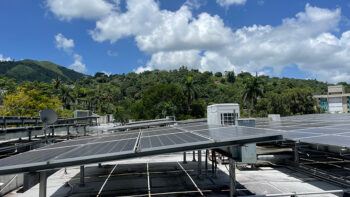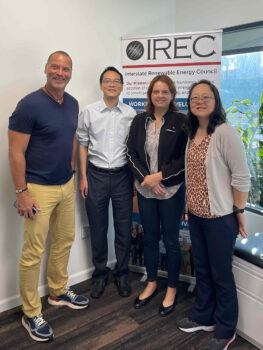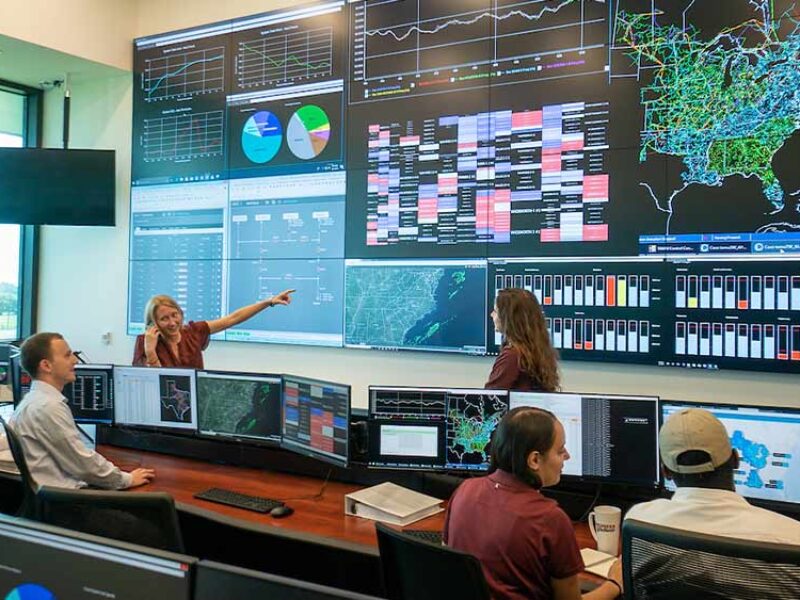Fostering Energy Resilience In Rural Puerto Rico

Tucked away in the mountains of western Puerto Rico, the rural community of Castañer faced months without power in the aftermath of Hurricane Maria in 2017. A team, including researchers from Texas A&M University, is now working to better manage and withstand future challenges using technology and distributed energy resources like rooftop solar panels.

The project will partner with the community of Castañer to develop and implement a localized energy resilience plan using the open-source Internet of Things platform VOLTTRON to support automated sensing and control systems for rapid energy restoration. The work is supported by the U.S. Department of Energy’s Renewables Advancing Community Energy Resilience program.
Dr. Zheng O’Neill, associate professor of mechanical engineering and J. Mike Walker ’66 Career Development Professor, is supporting the project alongside the nonprofit Slipstream, which is leading the effort. O’Neill also serves as associate director of the Energy Systems Laboratory at Texas A&M.
“This community is highly susceptible to electric outages stemming from Puerto Rico’s fragile power infrastructure,” O’Neill said. “After Hurricane Maria, fallen trees and debris blocked roads, which isolated residents for 10 days—first responders had to arrive via helicopter. The community remained without power for six months. This project will develop an innovative community-based energy resilience plan and explore and demonstrate a VOLTTRON-based automated sensing and control system to enable rapid energy restoration.”
What Is Energy Resilience?
The team defines energy resilience as the inherent and adaptive capacity of buildings, infrastructure and urban energy systems to anticipate, absorb, recover from and adaptively respond to disruptions in energy supply and demand while ensuring sustained functionality, efficiency and equitability both in the short and long term, O’Neill said.
With the implementation of more robust renewable energy sources, such as solar panels, battery energy storage systems and two multi-property microgrids, the team hopes to provide energy security for the more than 2,000 residents of the area — as well as a blueprint for others to follow.
“The proposed solution provides a community-wide low-cost sensing and control system that can coordinate different distributed generation controls and share information among stakeholders through the smartphone app to improve community resilience,” O’Neill said. “The technology can be scaled and replicated in many other similar rural, underserved communities with multiple solar panels and battery storage. This system can also serve as a centralized platform to provide the transparent sharing of information (like a clearing house) of all distributed generation assets for all stakeholders. This could be an intermediate step towards an energy management system that can coordinate and control various distributed energy sources with different generation profiles to create and manage virtual power plants.”
They plan to evaluate the current energy resistance baselines — such as minimum load, available renewable resources, power backups and other energy-generating technologies — to identify the most critical assets and services and assess the impacts of previous extreme weather events on the community.
The Smart and Connected Homes Testbed on the Texas A&M-RELLIS campus will serve as one of two full-scale testing environments for the research, where the proposed strategies will be rigorously tested at full scale before they are implemented in the Puerto Rican community. O’Neill and her team will lead the efforts to develop and refine the automation strategy.
One of the project’s challenges is the need for a more reliable and robust internet connection during extreme weather events. The team is working to prepare a strategy for improvement, including redundant cellular networks, fiber optic connections for critical assets and a low-power wide area networking wireless network backup.
Additional partners on the project include the Interstate Renewable Energy Council, Luma Energy, La Cooperativa Hidroeléctrica de la Montaña and ACE IoT Solutions.
Media contact: Alyson Chapman, achapman@tamu.edu





